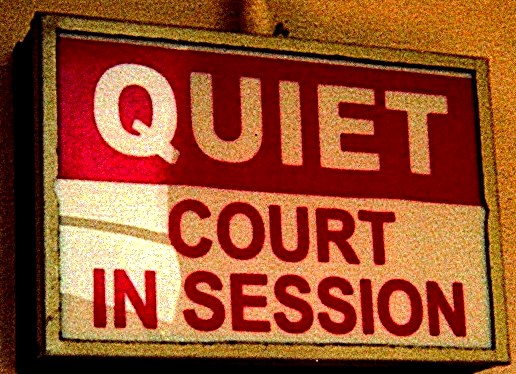Re Haston 2016 BCSC 1962 is a good review of the law relating to the appointment of a committee under the Patients Property Act, as well as the criteria for choosing the best party to be the committee. Once appointed the committeeship voids any Powers of Attorney or Representation agreements that existed prior to the court order for committeeship.
21 The applicable statutory provisions for the judicial determination of whether a person is incapable of managing herself or her affairs are found in s. 3 of the Patient Property Act
Hearing of application
3(1) If, on
(a) hearing an application, and
(b) reading the affidavits of 2 medical practitioners setting out their opinion that the person who is the subject of the application is, because of
(i) mental infirmity arising from disease, age or otherwise, or
(ii) disorder or disability of mind arising from the use of drugs,
incapable of managing his or her affairs or incapable of managing himself or herself, or incapable of managing himself or herself or his or her affairs,
incapable of managing his or her affairs or incapable of managing himself or herself, or incapable of managing himself or herself or his or her affairs, it must, by order, declare the person
(2) The court may, on hearing an application under this section and reading the affidavits described in subsection (1), direct an issue to be tried, and in that event the following provisions apply:
(a) the question in issue is whether the person who is the subject of the application is, because of
(i) mental infirmity arising from disease, age or otherwise, or
(ii) disorder or disability of mind arising from the use of drugs,
(b) this Act applies to the issue and the trial of it;
(c) the Supreme Court Civil Rules apply;
(d) the court must
(i) dismiss the application, or
(ii) by order, declare that the person who is the subject of the application
(A) is incapable of managing his or her affairs,
(B) is incapable of managing himself or herself, or
(C) is incapable of managing himself or herself or his or her affairs.
the court is satisfied that the person is, because of
(c) mental infirmity arising from disease, age or otherwise, or
(d) disorder or disability of mind arising from the use of drugs,
(e) incapable of managing his or her affairs,
(f) incapable of managing himself or herself, or
(g) incapable of managing himself or herself or his or her affairs.
Law
24 Section 6 of the PPA provides that “on application . . . the court may appoint any person to be the committee of a patient.” The powers of a committee are set out in ss. 15 and 17.
25 In circumstances where a patient has been declared incapable of managing herself or her affairs, these include “all the rights, privileges and powers with regard to the estate of the patient as the patient would have if of full age and of sound and disposing mind”, and as well “the custody of the person of the patient”: PPA s. 15(1)(a) and (b)(ii).
26 A committee is also vested with all “the rights, powers and privileges that would be exercisable by the patient as a trustee, as the guardian of a person, as the holder of a power of appointment and as the personal representative of a person, if the person were of full age and of sound and disposing mind”: PPA s. 17.
27 Section 16 allows the court to “attach conditions or restrictions” on the powers of a committee in the same order by which the committee is appointed. Committeeship may be divided between multiple joint or co-committees.
28 The PPA does not prescribe any criteria for the selection of an appropriate committee. Section 18(1) provides as follows:
18(1) A committee must exercise the committee’s powers for the benefit of the patient and the patient’s family, having regard to the nature and value of the property of the patient and the circumstances and needs of the patient and the patient’s family.
29 Counsel provided two main authorities that discuss the relevant factors the court should consider when determining who is best suited to act as a committee under the PPA: Baker-MacGrotty v. Baker, 2016 BCSC 699[Baker-MacGrotty] and Bowman (Re), 2009 BCSC 523 [Bowman].
30 In Bowman, at paras. 32-34, Dardi J. held that “the test for determining who is an appropriate committee . . . is governed by the patient’s best interests”; the choice between two proposed committees involves an inquiry into who will best serve those interests: see also Re Pineo [1985] B.C.J. No. 1171 (S.C.) at para. 6.
31 In Baker-MacGrotty at para. 37, Bernard J. quoted Masuhara J.’s helpful summary from Stewart (Re), 2014 BCSC 2321, of the applicable law on this question. Masuhara J. listed the following considerations:
(a) whether the appointment reflects the patient’s wishes, obviously when he or she was capable of forming such a wish;
(b) whether immediate family members are in agreement with the appointment;
(c) whether there is any conflict between family members or between the family and the patient, and whether the proposed Committee would be likely to consult with immediate family members about the appropriate care of the patient;
(d) the level of previous involvement of the proposed Committee with the patient, usually family members are preferred;
(e) the level of understanding of the proposed Committee with the patient’s current situation, and will that person be able to cope with future changes of the patient;
(f) whether the proposed Committee will provide love and support to the patient;
(g) whether the proposed Committee is the best person to deal with the financial affairs and ensure the income and estate are used for the patient’s benefit;
(h) whether a proposed Committee has breached a fiduciary duty owed to the patient, or engaged in activity which diminishes confidence in that person’s abilities to properly handle the patient’s affairs;
(i) who is best to advocate for the patient’s medical needs;
(j) whether the proposed Committee has an appropriate plan of care and management for the patient and his or her affairs and is best able to carry it out; and
(k) whether a division of responsibilities such as between the patient’s estate and the patient’s person to different persons would serve the best interests of the patient, or would such a division be less than optimal for the patient.
32 I would add to this non-exhaustive list the following considerations: whether the proposed Committee’s resides near the patient; whether the proposed Committee is able to provide transportation for the patient, if necessary; whether outside demands on the proposed Committee’s time and availability will detract from his or her ability to perform his or her obligations; and whether the proposed Committee is able and willing to facilitate any recreation or religious practice in which the patient wishes to participate.










